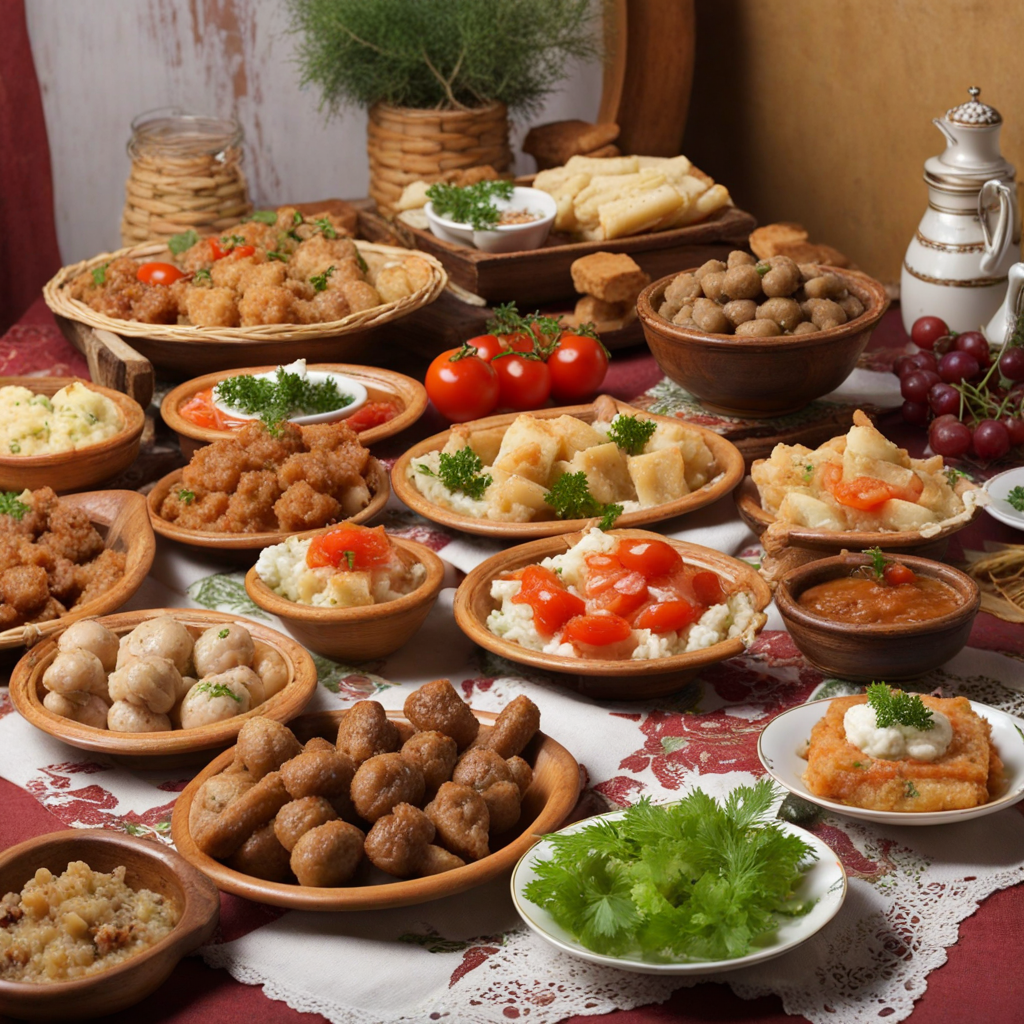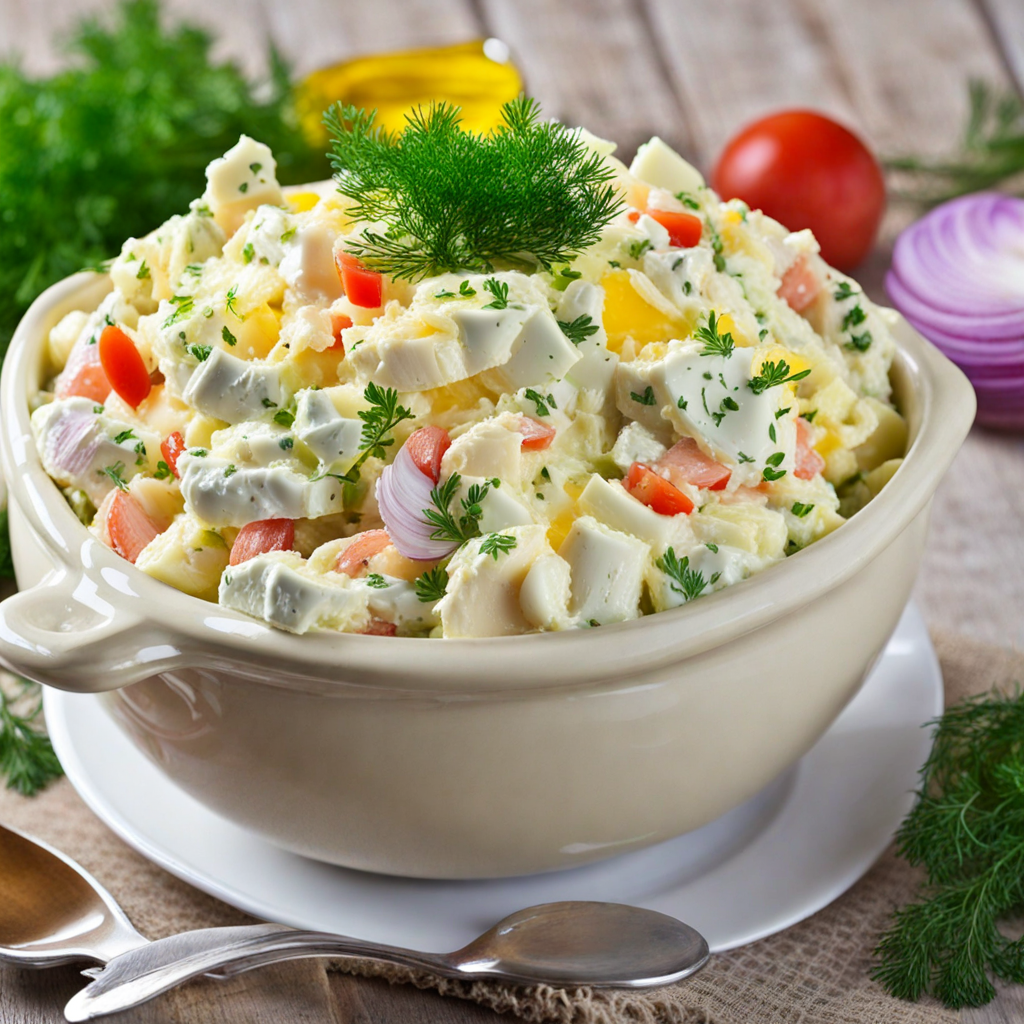Yabluchnyk
Yabluchnyk, a delightful Ukrainian dessert, is a traditional apple pie that embodies the essence of Ukrainian home cooking. This delectable pastry features a tender, flaky crust that envelops a luscious filling of sweet, spiced apples. The apples are often mixed with cinnamon, sugar, and sometimes a hint of vanilla, creating a warm and inviting aroma that wafts through the kitchen as it bakes. Each bite reveals a perfect balance of tart and sweet, showcasing the natural flavors of the apples, which are typically fresh and locally sourced, making it a perfect autumn treat when apples are in season. What sets Yabluchnyk apart from other apple pies is its unique preparation method. The dough can be made from scratch using simple ingredients like flour, butter, and eggs, resulting in a rich and buttery crust that complements the fruit filling beautifully. Some variations incorporate a crumbly topping made from flour, sugar, and butter, adding a delightful crunch to each slice. The pie is often served warm, perhaps with a scoop of vanilla ice cream or a dollop of whipped cream, enhancing its indulgent nature while allowing the flavors to shine. Yabluchnyk is not just a dessert; it's a celebration of Ukrainian culture and hospitality. Traditionally enjoyed during family gatherings, holidays, or special occasions, this pie brings people together around the table, where stories and laughter are shared. As you take a bite of this scrumptious treat, you're transported to the heart of Ukraine, where the love and care of home-cooked meals are cherished. Discovering Yabluchnyk offers a taste of tradition and a glimpse into the rich culinary heritage of Ukraine, making it an unforgettable experience for any food lover.
How It Became This Dish
The History of Яблучник: A Ukrainian Culinary Treasure #### Origin and Early History Яблучник, derived from the Ukrainian word for apple, "яблуко," refers to a traditional apple pie or cake that holds a cherished place in Ukrainian cuisine. The roots of Яблучник can be traced back to the fertile lands of Ukraine, where apples have been cultivated for centuries. Archaeological evidence suggests that apples were domesticated in Central Asia and gradually spread to Europe, with Ukraine being a key region for their cultivation due to its favorable climate and rich soil. As early as the 11th century, records indicate that apples were not only a staple fruit but also a symbol of abundance and prosperity. The orchards of Ukraine flourished, and apples became a significant part of the local diet. In Ukrainian folklore, apples often symbolize health, beauty, and the transition of seasons, particularly autumn, when they are harvested. #### Cultural Significance Яблучник is more than just a dessert; it is intertwined with Ukrainian culture, tradition, and family gatherings. The preparation of this dish often marks special occasions, from family celebrations to communal feasts. The act of baking Яблучник is frequently a communal activity, bringing families together in the kitchen, where recipes are passed down through generations, often accompanied by stories of ancestry and regional pride. Traditionally, Яблучник is made with simple ingredients: fresh apples, flour, sugar, butter, and eggs. The use of seasonal apples, particularly those that are tart and crisp, contributes to the cake's unique flavor profile. Each family may have its own variation of the recipe, reflecting local apple varieties and personal tastes. This diversity is a testament to the adaptability of Ukrainian cuisine, where regional ingredients and family traditions shape culinary practices. #### Development Through Time As Ukraine's history unfolded, so did the evolution of Яблучник. The dish underwent several transformations influenced by various historical events, social changes, and culinary trends. During the 18th and 19th centuries, as Ukraine experienced increased interactions with neighboring cultures, especially Polish, Russian, and Jewish communities, Яблучник began to incorporate new techniques and flavors. In the late 19th century, with the rise of urbanization and the establishment of bakeries, Яблучник began to appear in more public settings. Bakeries started offering their versions of this traditional dish, often featuring sweeter variations and elaborate decorations. This commercialization of Яблучник coincided with a growing appreciation for national identity and folk traditions among Ukrainians, particularly during the national revival movements in the early 20th century. During the Soviet era (1922-1991), while many traditional foods faced challenges due to food shortages and political restrictions, Яблучник persisted as a beloved comfort food. The use of apples, which were widely available, allowed families to continue making the dish despite economic hardships. In many households, it became a symbol of resilience and resourcefulness. #### Modern Interpretations With Ukraine's independence in 1991, there has been a resurgence of interest in traditional foods, including Яблучник. Modern Ukrainian chefs and home cooks are rediscovering and celebrating their culinary heritage, often seeking to elevate traditional dishes through innovative techniques and presentation styles. Contemporary versions of Яблучник may include gourmet twists, such as using spiced apple compote, incorporating nuts, or adding a layer of caramel. Moreover, the global rise of interest in farm-to-table and seasonal cooking has brought renewed attention to Яблучник. Local farmers' markets in Ukraine and abroad feature a variety of apples, encouraging cooks to experiment with different flavors and textures. This movement not only honors the traditional aspects of Яблучник but also promotes sustainable practices and regional agriculture. #### Seasonal Celebrations and Modern-Day Context Today, Яблучник is often associated with autumn, coinciding with apple harvests. In many Ukrainian households, families engage in rituals surrounding apple picking, where they gather to collect fresh apples from local orchards. These gatherings often culminate in the preparation of Яблучник, reinforcing family bonds and cultural traditions. Moreover, Яблучник has found its way into the culinary landscape beyond Ukraine, as the diaspora community shares their beloved recipes with the world. Ukrainian festivals and cultural events in various countries showcase Яблучник, allowing a broader audience to appreciate this delicious symbol of Ukrainian heritage. #### Conclusion In conclusion, Яблучник is a rich tapestry of history, culture, and culinary evolution. From its humble beginnings as a simple apple cake rooted in the agrarian life of Ukraine to its status as a beloved comfort food that resonates with generations, Яблучник encapsulates the spirit of Ukrainian resilience and familial love. As it continues to adapt and thrive, this delightful dish remains a testament to the enduring power of food as a cultural cornerstone, bridging past and present while inviting everyone to partake in the warmth of Ukrainian hospitality. Whether enjoyed in a rustic village or a bustling city, Яблучник serves as a delicious reminder of the ties that bind us to our heritage and to one another.
You may like
Discover local flavors from Ukraine







